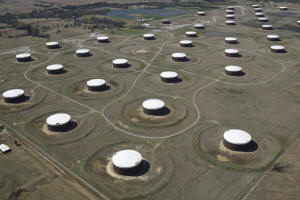|
Russia's Interfax news agency cited the defence ministry as
saying that while large-scale drills across the country
continued, some units of the Southern and Western military
districts have completed their exercises and started returning
to base.
Brent crude fell $2.65, or 2.8%, to $93.83 by 1045 GMT. U.S.
West Texas Intermediate (WTI) crude dropped $2.82, or 3%, to
$92.64.
"There are no prizes for guessing the driving force behind this
bout of volatility," said Stephen Brennock of oil broker PVM.
"The Russia-Ukraine crisis has put the energy market on high
alert for possible disruptions of Russian energy supplies."
Both oil benchmarks hit their highest since September 2014 on
Monday, with Brent touching $96.78 and WTI reaching $95.82. The
price of Brent rose 50% in 2021 as a global recovery in demand
from the COVID-19 pandemic strained supply.
Britain's Foreign Secretary Liz Truss said on Tuesday a Russian
invasion of Ukraine was highly likely, although Prime Minister
Boris Johnson and U.S. President Joe Biden agreed in a call on
Monday there was a crucial window for diplomacy.
Investors are also watching talks between the United States and
Iran on reviving Tehran's nuclear deal with world powers, which
could potentially allow for higher Iranian oil exports.
Russian Foreign Minister Sergei Lavrov spoke to his Iranian
counterpart Hossein Amirabdollahian on Monday and they noted a
"tangible move forward" in reviving the Iran nuclear deal,
Russia's foreign ministry said.
In other developments, the latest weekly reports on U.S.
inventories are expected to show a drop in crude stocks,
underlining a tight supply and demand balance.
The first of this week's two reports, from the American
Petroleum Institute, is due at 2130 GMT.
(Additional reporting by Yuka Obayashi; editing by Jason Neely)
[© 2022 Thomson Reuters. All rights
reserved.]
This material may not be published,
broadcast, rewritten or redistributed.
Thompson Reuters is solely responsible for this content.

|
|





